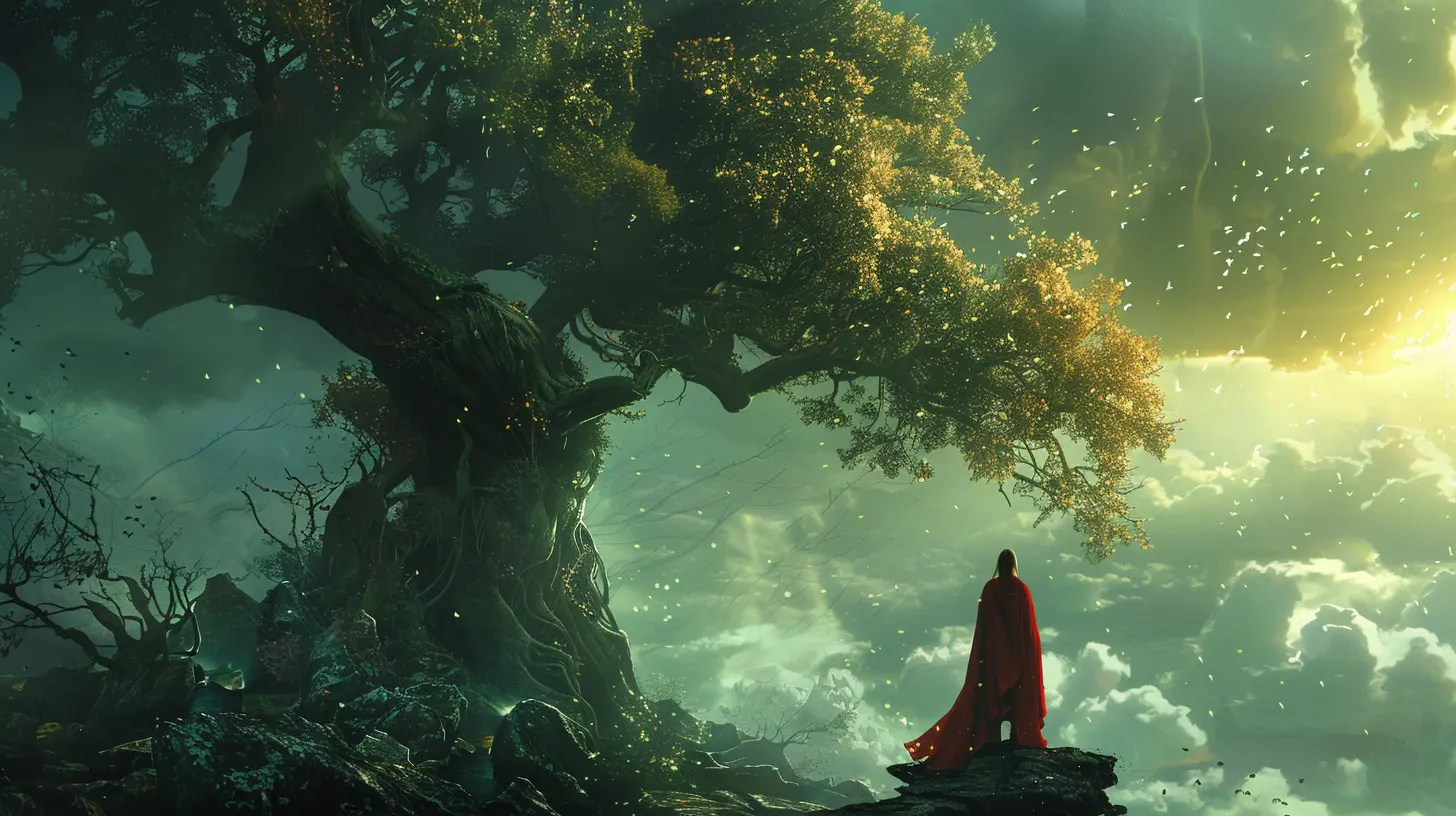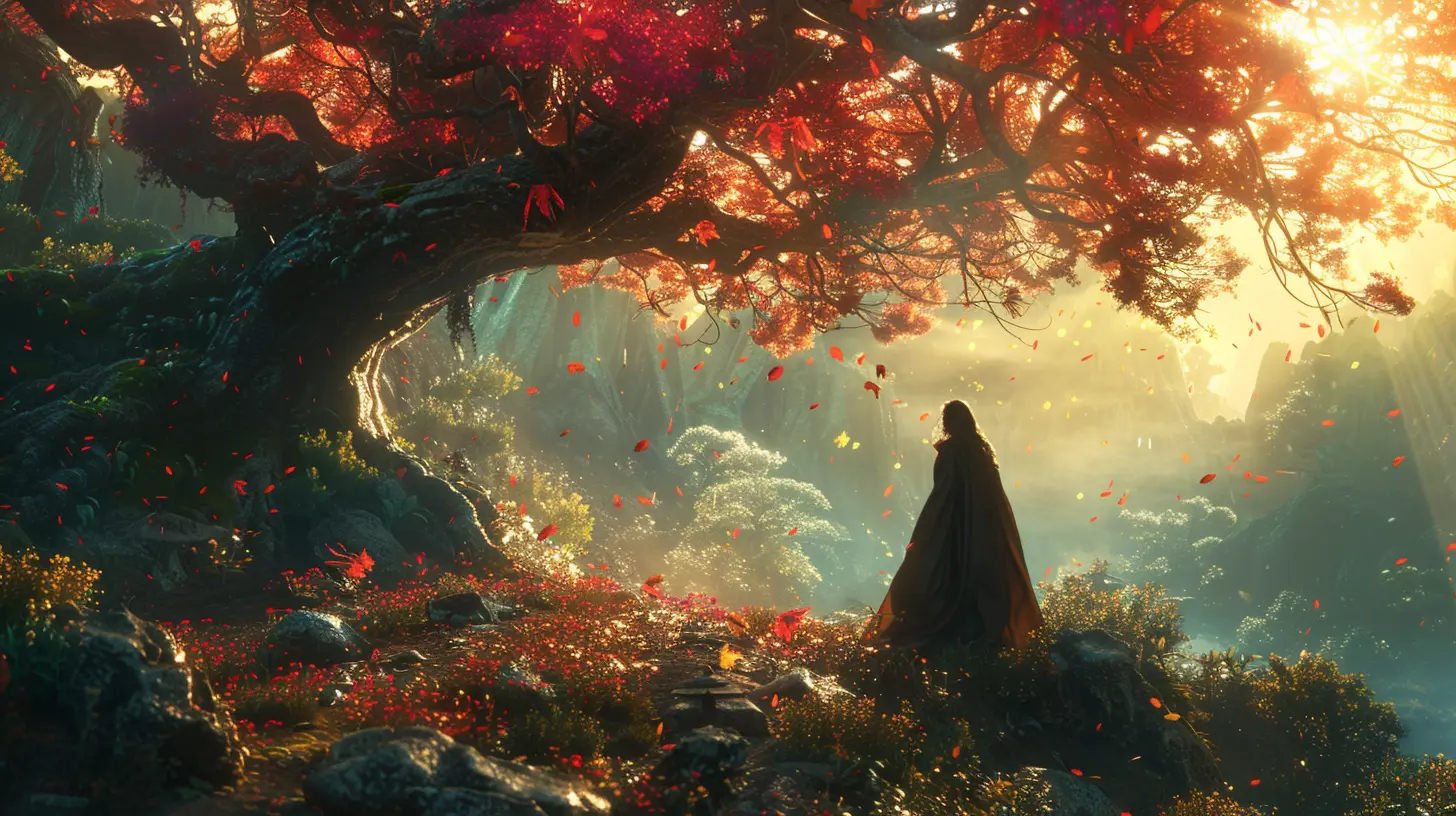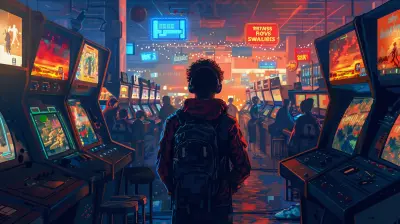Branching Paths: The Art of Dynamic Storytelling in Games
10 August 2025
When was the last time a video game made you feel like you were in control of the story? Maybe it was a moral dilemma that forced you to pause the game or a choice that shaped the fate of an entire world. That’s the beauty of dynamic storytelling—it’s not just a passive narrative; it’s a living, breathing experience shaped by your decisions. Today, we’re diving headfirst into the art of dynamic storytelling in games, breaking down what makes it tick, why it works, and how it impacts us as players.
What Is Dynamic Storytelling in Games?
Let’s start with the basics. At its core, dynamic storytelling is about giving players agency. It's the opposite of a linear, straightforward narrative where you’re simply along for the ride. In games with dynamic storytelling, the choices you make influence the story, characters, and world in real, tangible ways. One decision can lead to branching paths, and suddenly, you’re not just playing a game—you’re helping write its story.Think of it like a “Choose Your Own Adventure” book but on steroids. Instead of flipping to page 56, you’re deciding whether to save a village or let it fall into ruin. Unlike traditional storytelling, the narrative isn’t set in stone. It adapts to you, creating a unique experience every time.
Why Is Dynamic Storytelling So Engaging?
Let’s be honest—no one likes being a backseat gamer in their own story. Dynamic storytelling works because it makes you the protagonist in every sense. You don’t just follow the hero’s journey; you become the hero. Or anti-hero. Or, if you’re feeling spicy, the outright villain. The choices are yours, and that ownership hits differently.It taps into something primal: our love for control. We love having a hand in shaping outcomes, whether it’s in real life or through a virtual lens. And when a story reacts to our choices, it feels personal. It’s no longer a generic tale—it’s your tale.
Have you ever played a game and thought, “Wow, that decision really stuck with me”? That’s the magic of dynamic storytelling. Those choices can linger for days, even years. Games like The Witcher 3, Mass Effect, and Undertale do this brilliantly, leaving players emotionally invested long after the credits roll.
The Mechanics of Branching Paths
Dynamic storytelling isn’t just about throwing a bunch of random choices at the player and calling it a day. It’s a delicate balancing act. Let’s break down the key mechanics that make it work:1. Branching Narrative Arcs
At the heart of dynamic storytelling is the concept of branching paths. Every choice leads to new possibilities, like a tree growing new branches. But here’s the kicker: not all branches are equal. Some could lead to major story twists, while others might simply alter a minor detail. It’s a mix of the big and small that keeps things interesting.For example, in Detroit: Become Human, a single interaction or failure can ripple through the entire story, changing character arcs and even determining who lives or dies. It’s storytelling with consequences at every level.
2. Consequences and Stakes
Choices are only meaningful if they come with consequences. Without stakes, the narrative feels hollow. Imagine choosing between two dialogue options, but no matter what you pick, the story heads to the same destination. Boring, right? Games like Until Dawn or Telltale’s The Walking Dead thrive on consequence-driven decisions, where the wrong move could cost a life—or several.3. Player Agency
The best dynamic storytelling gives you the illusion of control, even if the outcomes are pre-designed. It’s kind of like being backstage at a magic show. You’re not really pulling the strings, but it sure feels like you are. Games that master this balance make you believe your choices matter, even if the developers had to do some clever smoke-and-mirror tricks to make it happen.
Memorable Examples of Dynamic Storytelling
Let’s talk about some of the MVPs of branching stories. These games didn’t just dabble in dynamic storytelling—they defined it.1. The Witcher 3: Wild Hunt
Geralt’s world is full of morally gray decisions. Do you save the cursed spirit or destroy it entirely? Each choice isn’t just black or white; it’s layered and nuanced. What makes The Witcher 3 shine is how your decisions affect entire regions, not just a single NPC encounter. That’s storytelling with depth.2. Mass Effect Series
The Mass Effect trilogy is basically the gold standard for player-driven narrative. Your choices carry over from game to game, creating a sprawling story where your actions reverberate across the galaxy. Save a species in game one? That might come back to haunt or help you in game three. It’s like playing a chess match where every move matters.3. Life is Strange
Here’s a game that took emotional storytelling to the next level. With time-rewinding powers, you might think choices lose their weight. But Life is Strange uses its mechanics to make you feel the consequences, even as you try to undo them. It’s a gut-punch of a game in the best way possible.The Challenges of Crafting Branching Paths
Creating dynamic storytelling isn’t all sunshine and roses. Let’s get real—there are some significant challenges game developers face when going down this path.1. Complexity Overload
For every new branch, the complexity of the game’s narrative increases exponentially. Think of it like a spiderweb—one new thread can connect to dozens of others. Developers have to plan meticulously to ensure all paths feel meaningful without collapsing under their own weight.2. Replayability vs. Burnout
The point of branching paths is to encourage replayability, right? But there’s a fine line between enticing players to replay the game and overwhelming them with too many options. If players feel like they have to replay a game ten times just to see everything, it can quickly turn into a chore instead of a joy.3. Balancing Freedom and Structure
Too much freedom, and the story can feel aimless. Too much structure, and it stops being dynamic. Developers have the herculean task of striking that perfect middle ground, where the story feels both open-ended and cohesive.Why Dynamic Storytelling Matters
At the end of the day, games are all about engagement. Dynamic storytelling isn’t just a gimmick—it’s a way to make stories stick. It’s no longer enough for games to look stunning (though we do love pretty graphics). Players crave emotional connections, and dynamic storytelling delivers that in spades.It also pushes games into a unique storytelling medium. Movies, books, and TV shows are mostly passive experiences. Games? They’re interactive by design. By embracing branching paths, games are carving out their own niche in the world of storytelling, giving audiences an experience that’s impossible to replicate elsewhere.
What’s Next for Dynamic Storytelling?
So, what’s the future of branching paths? Well, things are only going to get bigger and more ambitious. AI is set to play a massive role, allowing for even more personalized, reactive storytelling. Imagine a game that not only reacts to your choices but also learns your preferences and adjusts the narrative in real-time. Scary? Maybe. Exciting? Definitely.Another big shift is procedural storytelling, where games use algorithms to craft unique narratives on the fly. Think of it as letting the game’s story evolve naturally, like a Dungeons & Dragons campaign tailored specifically for you.
Final Thoughts: Why We Love Branching Paths
Dynamic storytelling isn’t just a trend—it’s a testament to how far games have come as a medium. It’s about breaking away from the rails and giving players the reins. Whether you’re forging alliances, betraying friends, or pondering the moral weight of your actions, branching paths turn players into co-creators. And honestly? That’s the kind of storytelling that sticks with you long after the controller’s down.all images in this post were generated using AI tools
Category:
Interactive StorytellingAuthor:

Lucy Ross
Discussion
rate this article
1 comments
Nym Mullen
Branching paths in games transcend mere choice, enriching player experience and emotional investment. This dynamic storytelling fosters deeper connections, allowing narratives to evolve uniquely based on individual player journeys.
August 21, 2025 at 2:33 PM

Lucy Ross
Thank you for your insightful comment! I completely agree—branching paths truly elevate storytelling in games, creating a more immersive and personalized experience for players.


